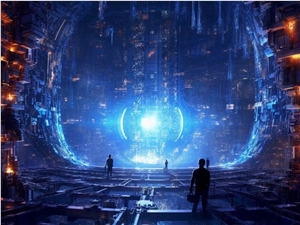In the era of continuous technological breakthroughs in gaming, Google DeepMind has once again brought us a groundbreaking innovation. Their latest game engine, GameNGen, is revolutionizing our perception of game graphics generation with its unique fully neural network-driven approach.
The core feature of GameNGen lies in its ability to generate game visuals in real-time. Unlike traditional game engines that rely on pre-rendered and stored images, GameNGen can create the next frame of the game instantly based on each player's actions. This means that every frame you see when you press a key or shake a controller is tailor-made for you by the AI engine at that moment.

What's even more astonishing is the high quality of the visuals generated by GameNGen, which are almost indistinguishable from real images. Players may find it hard to notice that these visuals are generated in real-time by AI, mistakenly believing they are experiencing a traditionally developed game. This near-perfect simulation not only showcases the power of AI technology but also opens up a new avenue for game development.
To demonstrate its technical prowess, GameNGen chose the classic game "DOOM" as its showcase. The engine can simulate "DOOM" game visuals in real-time at over 20 frames per second, a rate close to the minimum frame rate at which the human eye can perceive smooth animation. Given the complexity of real-time AI rendering, this achievement is undoubtedly impressive.
The emergence of GameNGen could have profound implications for the gaming industry:
Enhanced game development efficiency: Developers may no longer need to pre-design and render a large number of assets for each scene but can instead generate game worlds through AI training.
Personalized gaming experiences: Each player's game visuals could be unique, with AI adjusting the game environment based on the player's preferences and behavior patterns.
Limitless possibilities: In theory, this technology could create infinitely varied game worlds, greatly increasing playability and exploration.
Changes in hardware requirements: This technology might shift the demand for hardware from high-performance graphics processing to efficient AI processing.
New creative methods: Game designers may need to learn how to "teach" AI to create game worlds that align with their vision, rather than crafting every detail themselves.
Project link: https://gamengen.github.io/









